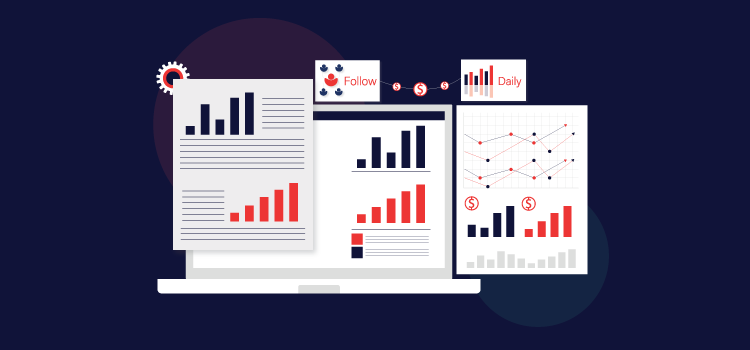Modernizing Reporting and Analytics
Principal Analyst

I have spoken to many institutions about their data management over the past several years. The one question I always ask is “Have your senior leaders ever brought conflicting data or reports to the provost or president?” Without fail, the answer is yes. Why does this happen? And what is the impact when an organization wants to make data-driven decisions?
The problem, more generally stated, is the lack of a single set of trusted reports, based on trusted and complete data. What does it take to reverse this problem into a single, trusted set of reports and data? The answer lies in building a complete data management program that is transparent, complete, agile, and trusted organizationally. That program can be technically simple or very complex, based on the variety in data sources, business activities, and the complexity of the strategic goals. The entire community needs to be clear about where to get data and how they can use it.
A one-size-fits-all tool may not be the answer. Institutions often require more than one reporting tool to answer the full set of questions being asked. The toolset of reporting and analytics solutions, however, should be broadly available, non-duplicative where possible, and centrally supported if needed by multiple units.
In recent years, we’ve heard more and more about analytics professionals being story-tellers. A series of dashboards, visualizations, and context can be woven into a single story to make a specific set of points to the recipients. For these sorts of stories to be told by leaders without the heroics that today are often needed to create these stories, an entire ecosystem of techniques, practices, and tools must be in place.
In Tambellini’ s current research, we are looking at many of these components under the umbrella of data management:
- Strategy
- Data governance
- Reporting and Analytics
- Data repositories
- Integration tools
This holistic approach to maturing the institution’s data management produces, in the end, trusted data from which reporting and analytics can result, in addition to proper oversight of the resulting products.
There is no more important single word in data management than trust.
Another view of the data, tools, and practices that culminate in trusted reporting and analytics is seen below. The building blocks are complete data (structured and unstructured), clean data, and organized and accessible data (in an accessible repository). Finally, that data is served up via great reporting and analysis tools. Data Governance is required to ensure the alignment of data to the organizational controls, including ownership, stewardship, and quality. Only when all these other things are done will the reporting and analytics tools you choose matter.

To augment a trusted data strategy, adopting modern reporting and analytics tools can be a great asset that moves an institution closer to a data-driven institution. That being said, the reporting and analytics tools do matter a great deal. Modern reporting has become increasingly visually driven and, with the maturation of reporting solutions, often very simple to use. Easy-to-use, user-licensed visualization technology has been made available to many data analysts in higher education over the last several years. An example is the prevalence of Tableau desktop being purchased by departments and end-users. Often, central IT partners opposed or did not support this effort, as they could not see the value of these tools over what they were providing. As that wave has come across the landscape, it has become more and more apparent that these tools are crucial—and that they will be in flux for some time. We have also seen many institutions adopt these tools with central support.
The market has responded, and we now see easy-to-use visualization technology built into administrative systems platforms and enterprise reporting platforms. Over the coming months, Tambellini will publish research on these practices and toolsets and their alignment to higher education.
Tambellini recommends some specific activities when reviewing your reporting technologies.
- Create a Community. All these constituencies are critical to the healthy design and functioning of an excellent reporting strategy. The degree of involvement ranges from attending vendor demos and providing informal feedback to membership on the selection committee.
- Institutional Executives
- IT
- CISO
- Institutional Research
- Data Owners and Stewards
- Report Developers
- Report Inventory. Gather and categorize your current reports, noting data sources, users, and current usage. Though you will likely not replicate off these reports in a new tool, it’s essential to know what is currently being done.
- Data Warehouse/Data Virtualization. Consider where your reporting tools will source their data and ensure the tools you are looking at can easily connect to these data sources.
- Report Writers. A strategic view of who needs to create and run reports is essential when selecting a toolset. Some are more focused on individual report writers, and some are more focused on an enterprise view of managing reports. This group may include data analysts, business analysts, developers, and other traditional job categories.
- Solution Selection. Be clear about what kinds of reports you need in a new tool.
- Operational reports tend to be focused on transactional activity and are now often best suited to be developed in and generated from the system of record. Transactional drill-down is an absolute requirement to make them useful, and ideally, dashboards and visualizations augment their usefulness. The ability to take action on a transaction seamlessly from the reporting tool is a significant functionality enhancement for end-users.
- Analytics tend to be used for a broader view, almost always with visualizations and often include trend data and multiple sources of data, making a warehouse, lake, or data virtualization the natural data source. These tools may also include statistical tools (e.g., R, SAS) to perform the analysis between the data source and the production of the report.
- Solution Procurement. Our research outlines many factors that should be considered before and during your formal procurement process. Consider licensing models, partnerships, ease of use, report administration requirements, and security when building your process.
- Implementation. Implementation planning is a critical step. If a smaller pilot can be arranged, you will learn a great deal about the best rollout strategy for your organization. Consider the training required, the transition period in which reports might be migrated, and the support of the report-writer community during the process.
It bears repeating that one tool may not be sufficient for your institution’s requirements. Building a strategy and processes that can handle multiple tools is a wise early investment. Modern tools have great power, but without great data and processes, that power can be aimed in directions that leave institutions more confused and frustrated than before they began. Consider reviewing the broad-set data management practices and tools your institution needs before looking for a reporting or analytics toolset.
Stay tuned for more Tamebllini research on reporting strategies and information on the leading vendors in this area.
Categories
- Academic Administration
- Advancement
- Content Management
- CRM Platforms
- Customer Experience (CX)
- Cybersecurity
- Data Management and Analytics
- Enterprise Portals and Mobile Apps
- Event Management
- Finance
- HCM/HR
- IT Tools and Infrastructure
- Life at Tambellini
- Services
- Student
- Teaching and Learning
- Technology Leadership
- Thought Leadership
- Uncategorized
Share Article:

Other Posts From this Author:
© Copyright 2024, The Tambellini Group. All Rights Reserved.